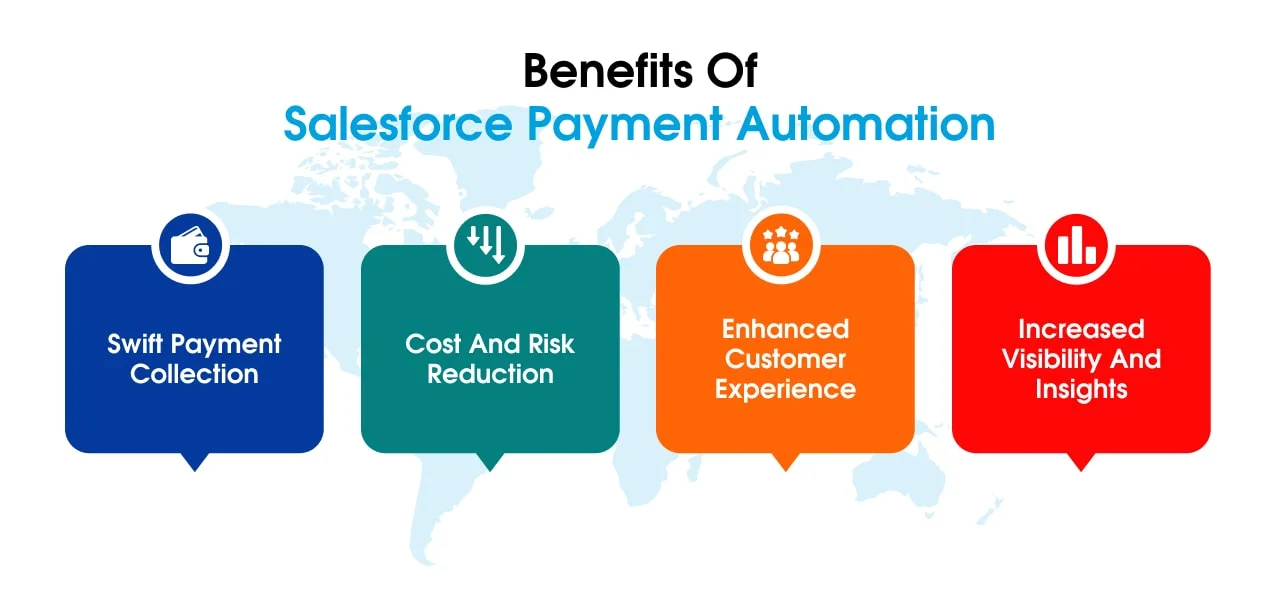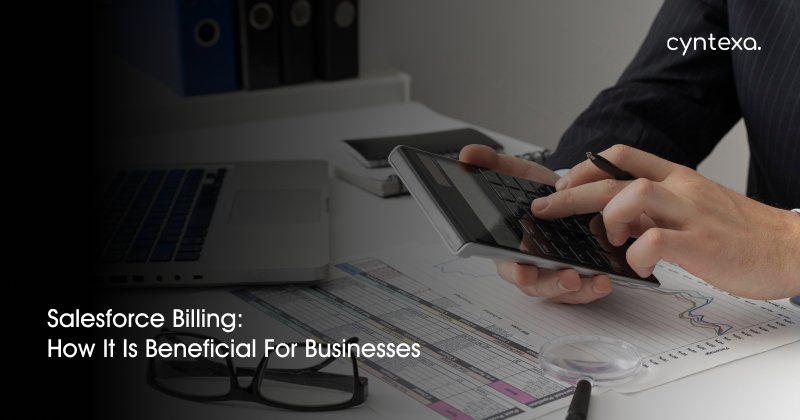Table of Contents
Automation has reshaped business, bringing ease to professionals’ lives. In online payments, customers favour the simplicity of initiating transactions. Have you ever wished handling online business payments could be as easy as a click? Salesforce ensures this with automated payment processes, streamlining financial management. This extends a convenient payment method globally, unlocking doors to vast, untapped markets.
Explore how Salesforce automates payments for seamless online transactions. Unveil its magic, offering a global and convenient payment method. Discover the secrets behind the system, supercharging your business for success.
Let’s Start with Understanding Salesforce Billings
When diving into the payment processing realm within Salesforce, it’s essential to shed light on Salesforce Billing.
Salesforce Billing is an automated billing process created by Salesforce, serving as an add-on package. It leverages vital records and data from Salesforce CPQ to streamline and automate the invoicing procedure.
This solution enables companies to accept payments and allocate them within the Salesforce platform effortlessly. The journey begins with placing an order in Salesforce CPQ, where Salesforce Billing takes the reins, generates invoices, manages revenue, and oversees payments.
Salesforce CPQ, short for Configure, Price, Quote, acts as a sales tool for representatives, facilitating the rapid and accurate generation of sales quotes for quick deal closures.
This process proves advantageous for businesses and customers, operating seamlessly through automation. Moreover, the platform is designed to be hassle-free and user-friendly. Consequently, many companies use it as their preferred payment processing medium for many transactions.
Multiple Payment Methods in Salesforce
Payment Methods in Salesforce Billing support various interfaces for seamless credit card and ACH transactions. These methods securely store customer credit card and ACH details and payment gateway information. In today’s automated payment landscape, businesses favour efficient methods that streamline the payment submission process, eliminating the need for manual data entry. This not only saves time but accelerates transaction speed.
Salesforce Billing empowers users to create payment method records effortlessly from a predefined list within the related account. Essential fields, including payment gateway, payment type, auto-pay, and payment gateway token, are part of this record.
Now, the next thing you must be acquainted with is Payment Automation in Salesforce.
Process of Payment Automation in Salesforce
This is the process of collecting, processing, and receiving payments right there in Salesforce from your customers, based on automated flows. This empowers your team to redirect their manual efforts to processes needing more attention.
Payment automation can help you save time, reduce errors, improve customer satisfaction, and increase revenue.
How to Automate Payment Processes in Salesforce?
To automate payment processes in Salesforce, you need to use various tools and features, such as:
1. Payment Gateways
Payment gateways facilitate communication between Salesforce and customer banks during transactions. In Salesforce, payment gateway records establish this connection, which is assigned to payment methods linked to accounts. Salesforce supports diverse gateways like Stripe, PayPal, Authorize.Net etc. ChargeOn, a Salesforce-native solution, seamlessly integrates with over 30 payment gateways, enabling payment processing within Salesforce.
2. Payment Runs
Automated processes called payment runs utilize an account’s electronic payment method to settle outstanding invoice balances. Controlled by a payment scheduler, runs can be one-time or recurring. Filters and criteria allow customization, automating payment collection for recurring charges such as subscriptions.
3. Payment Center
Accessible from Salesforce objects or embedded in Experience Cloud sites, the payment centre empowers admins, users, and customers to pay invoices, manage payment methods, and create payments. It supports various payment methods like credit cards and bank transfers, enhancing self-service options for customers.
4. Automated Collections
Automated Collections eases the collection of overdue payments with strategies like email reminders, dunning campaigns, and retries. Customize rules, templates, and schedules using tools like Process Builder, Workflow Rules, and Flows for personalized logic.
For instance, utilizing a solution like ChargeOn can enhance this process by seamlessly integrating with various payment gateways and offering additional functionalities. Automated collections play a pivotal role in reducing payment issues, enhancing communication, retaining customers, and boosting revenue recovery.
From Swift Transactions to Enhanced Satisfaction: Benefits of Salesforce Payment Automation

Payment automation can bring many benefits to your business, such as:
1. Swift Payment Collection
Payment automation makes collecting money faster and easier. Whether customers use credit cards, debit cards, e-wallets, or bank transfers, businesses can make collecting payments simple. Automated payment runs let companies schedule and automatically settle invoices.
The payment centre allows manual payment applications, giving businesses different choices. Features like tokenization and retry logic help prevent payment issues and delays.
2. Cost and Risk Reduction
Payment automation saves money by reducing the costs of manual payment processing. It cuts expenses like labour, paper, postage, errors, fraud, and compliance. According to Fidesic Corporation, managing receivables can cost up to $8.44 per invoice.
Using payment automation not only saves costs but also improves cash flow. The system follows strict security standards like PCI-DSS, GDPR, and PSD, using encryption, authentication, and consent mechanisms.
3. Enhanced Customer Experience
Payment automation transforms the customer experience. Businesses can increase customer loyalty by making payments seamless and consistent across different devices. The system provides flexibility with options like recurring payments and promotions. It also improves communication by sending automated reminders, receipts, and notifications, enhancing customer engagement.
4. Increased Visibility and Insights
Payment automation uses data and analytics to help businesses see payment performance and customer behaviour. Different Salesforce tools, like payment schedules and transactions, help track payment details.
Tools like dashboards, reports, and Einstein Analytics offer a closer look, allowing businesses to measure and improve essential things like payment success rate, conversion rate, churn rate, and lifetime value.
Conclusion
Automating payments in Salesforce is like having a support tool for your business. It saves you time and money, makes things more accurate, and keeps your customers happy.
Using Salesforce’s payment features helps your business run smoother by making payments more accessible and reducing mistakes. But keeping things safe is crucial. Secure your data, do regular checks, and give your team the proper training.
To make this journey even better, you’ve got ChargeON. This Salesforce-native payment gateway integration app works seamlessly with Salesforce to ensure your payments are safe and sound within the platform.
And guess what? Our experts at Cyntexa would love to be there by your side. We ensure that your Salesforce payment processing undergoes a smooth transition, keeping up with the security standards and data shielding.
Embrace the efficiency and ease it brings to your financial processes.













